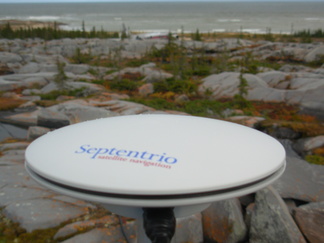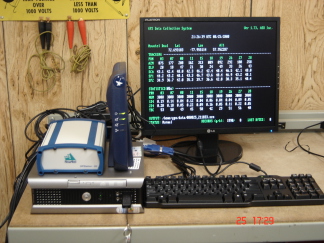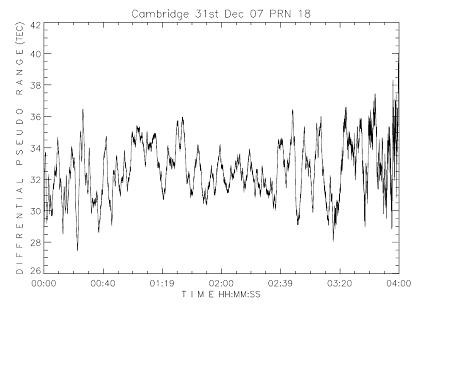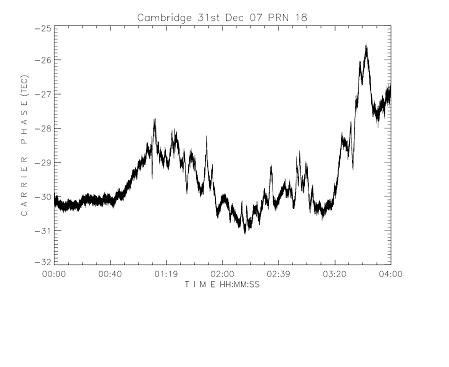GNSS Ionospheric Scintillation and TEC Monitors
CHAIN has 25 GNSS Ionospheric Scintillation and TEC Monitors (GISTM) located throughout the Canadian Arctic. Each GISTM operates as a dual-band Global Navigation Satellite System (GNSS) receiver as well as a GNSS Ionospheric Scintillation and TECM Monitor (GISTM). GNSS data is collected at 1Hz, while GISTM data is collected at 50Hz.
CHAIN uses two different models of GNSS/GISTM receivers:
Septentrio PolarXs Pro
CHAIN has 15 Septentrio PolaRxS Pro GISTM receivers. The Septentrio PolaRxS Pro multi-frequency, multi-constellation receivers designed for ionospheric studies and space weather applications designed around Septentrio's latest tracking engine and an ultra low noise Oven-Controlled Crystal Oscillator (OCXO). The antenna used is Septentrio's PolaNt* GG.
Each CHAIN receiver collects GPS observables and GISTM data from all visible GPS satellites. The GPS receiver tracks tracks all visible GPS signals at the L1 frequency (1575.42 MHz) and the L2 frequency (1227.6 MHz). It measures phase and amplitude (at a 50-Hz or 100-Hzrate) and code/carrier divergence (at 1-Hz rate) for each satellite being tracked on L1 and L2 Total Electron Content (TEC) is computed from combined L1 and L2 pseudorange and carrier phase measurements.
 |
 |
| Example of CHAIN's Septentrio PolaRxS Receiver set-up | Example of CHAIN's Septentrio GNSS Antenna |
Novatel GSV4004B
CHAIN has 10 GPS Silicon Valley GSV4004B GISTM receivers to collect ionospheric scintillation and TEC data for up to 10 visible GPS satellites. Novatel's GPStation-6 is the current replacement for the GSV4004B. The GSV4004B is based on a Novatel OEM4 receiver, with modified firmware, and a low phase noise oven-controlled crystal oscillator (OCXO) housed in Novatel EuroPak-3M enclosure. The antenna used is the NovAtel GPS702 L1/L2 GPS Antenna.
Each CHAIN receiver collects GPS observables and GISTM data from up to 10 visible GPS satellites. The GPS receiver tracks up to 10 GPS signals at the L1 frequency (1575.42 MHz) and the L2 frequency (1227.6 MHz). It measures phase and amplitude (at 50-Hz rate) and code/carrier divergence (at 1-Hz rate) for each satellite being tracked on L1. Total Electron Content (TEC) is computed from combined L1 and L2 pseudorange and carrier phase measurements.
 |
 |
| Example of CHAIN's GSV4004B GISTM receiver set-up | Example of CHAIN's Novatel GPS antenna |
Instrument Data Examples
Examples of the pseudorange and carrier phase measurements are below.
 |
 |
| Example of TEC derived using pseudorange measurement | Example of TEC derived using carrier phase measurement |
For information regarding the details of ionospheric measurements using GPS please read the GPS World article: GPS, the Ionosphere, and the Solar Maximimum
